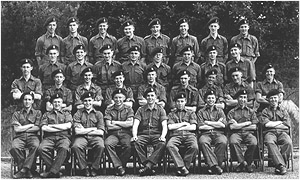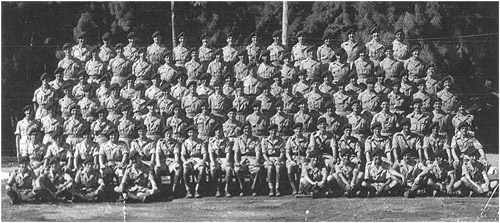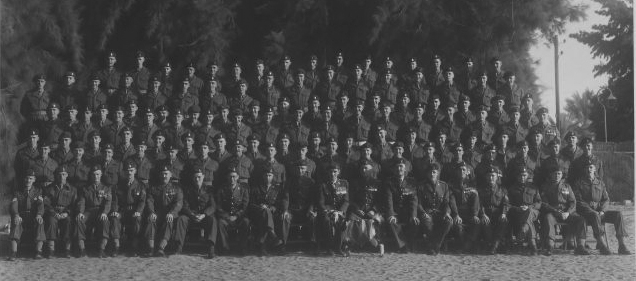
23 PARACHUTE FIELD AMBULANCE RAMC
Beja Camp, Ferry Point 1953
As Remembered By Peter R. Allen
THE HISTORY
The first Parachute Field Ambulance, 16 Para Field Ambulance, was raised in 1941 and was followed shortly afterwards by 127 Parachute Field Ambulance. 127 Parachute Field Ambulance was the forerunner of 23 Parachute Field Ambulance and became operational on 17th July 1942.
Initially deployed to North Africa in 1943 as part of the 1st Airborne Division the early days were spent rehearsing for the Allied invasion of Italy. This took place in September 1942. 127 Parachute Field Ambulance was in this theatre of operations in support of 2nd Parachute Brigade until July 1944. In August of that year, the unit participated in the airborne assault into Southern France. Operation ANVIL was an operation designed to thwart the Germans in their attempts to oppose the main sea-borne landing forces. After this successful action, 127 Parachute Field Ambulance returned to Italy with 2nd Parachute Brigade for re-equipping and reorganization before their next task. This was not long in coming and, in October 1944, the Brigade parachuting into Greece as civil war erupted. Extremely high winds, coupled with harsh terrain, made the initial parachute insertion very difficult and a large number of casualties were incurred (one battalion group suffered 27%). 127 Parachute Field Ambulance were in constant action throughout the civil war, not returning to Italy until February 1945.
After a short recuperation period in Italy, 127 Parachute Field Ambulance withdrew as part of 2nd Parachute Brigade to the U.K. Here they joined 6th Airborne Division. The relief at the imminent end of the war in Europe quickly disappeared when 6th Airborne Division was warned for deployment to Palestine and in September 1945, they deployed. This was a particularly dangerous period during which the Jewish groups fighting for the creation of the independent state of Israel sought to dishearten the British by carrying out indiscriminate terrorist attacks and random savagery. The unit spent some 15 months in Palestine, not returning to the U.K. until January 1947. As part of the reorganization of the British Army, the designation “127” was returned to the Territorial Army and on the 1st April 1947, the unit was officially designated as 23 Parachute Field Ambulance.
23 Parachute Field Ambulance, as part of 2nd Parachute Brigade, deployed to Germany and was stationed at Kingsway Barracks, Rhendsburg, Northern Germany. 2nd Parachute Brigade now re-titled 16 Independent Parachute Brigade was withdrawn to the U.K. in November 1949. On the 5th June 1951 the Brigade deployed by sea to Cyprus for acclimatization prior to undertaking security duties in the Canal Zone in October of that year. The Brigade returned to the U.K. in August 1954, 2nd Battalion Parachute Regiment and 23 Parachute Field Ambulance being the last units to embark. Early Jan 1956, 16 Independent Parachute Brigade again deployed to Cyprus for acclimatization training prior to carrying out numerous operation against EOKA terrorist groups.
This proved to be time well spent, as in March 1956 the Brigade began preparations
for an airborne assault on to the Suez Canal, Operation Musketeer. This took
place on 5th Nov 1956. Several members of the unit distinguished themselves,
including Captain JM Elliott RAMC, the anesthetist, who was awarded the Military
Cross and Sergeant L. Goodall RAMC, a Mention in Despatches. After this action
the Brigade units withdrew to Cyprus where 23 Parachute Field Ambulance remained
until returning to the U.K. in 1957.




